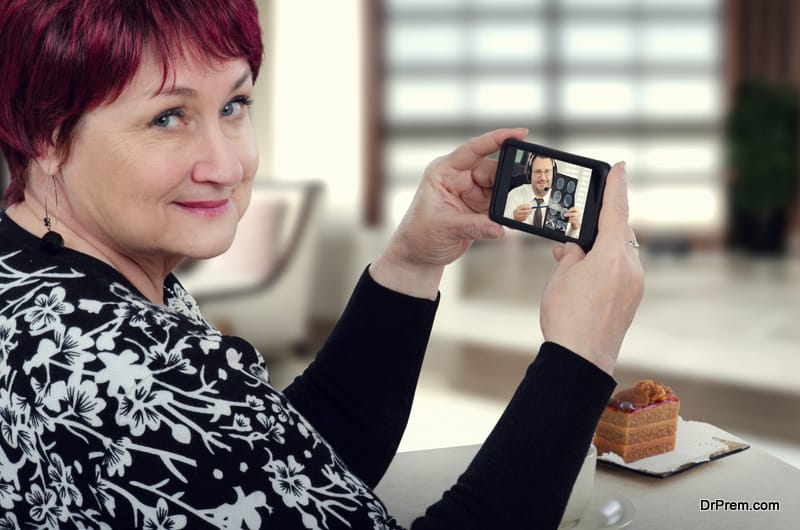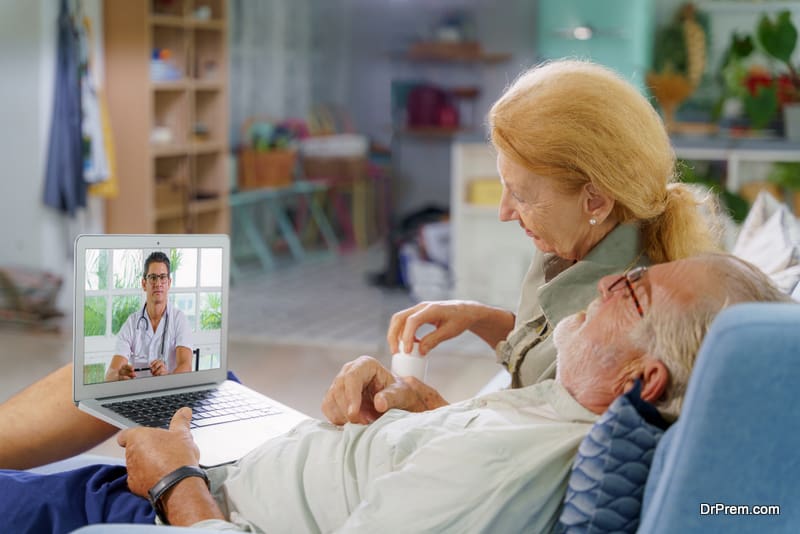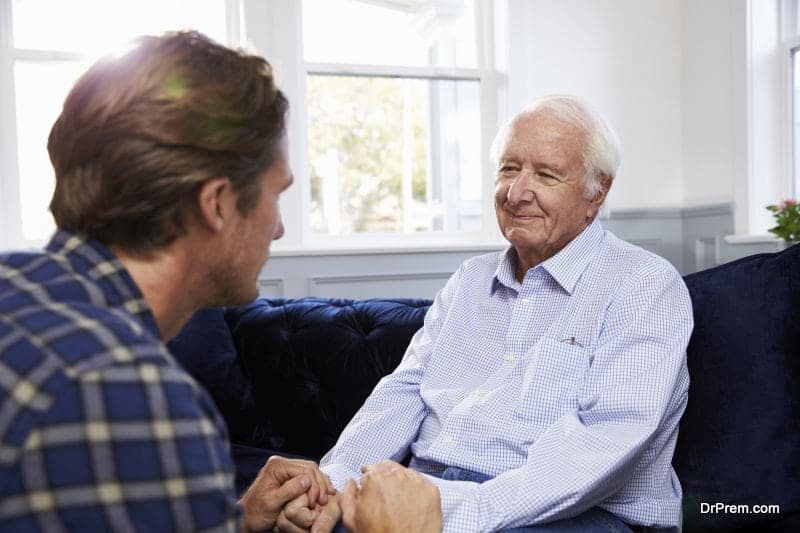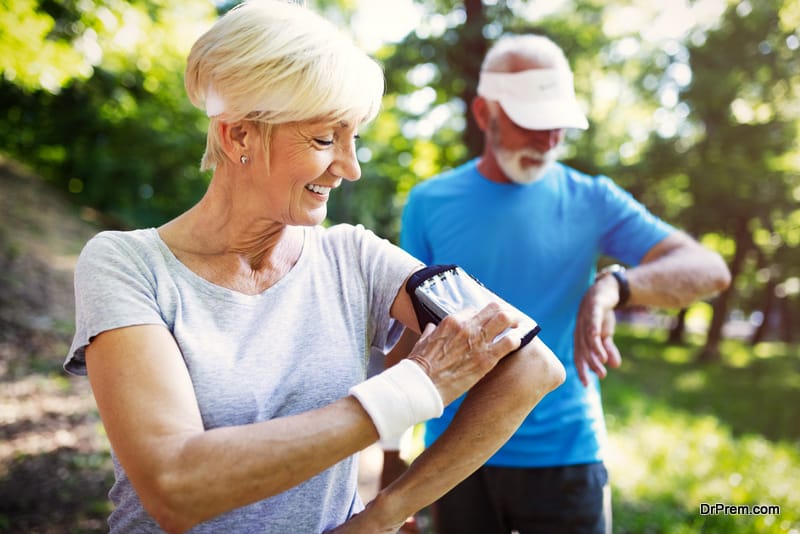Rapidly expanding healthcare tech applications has been empowering seniors to better care. Seniors need special assistance owing to various issues like severely restricted mobility, loss of vision and hearing, memory loss and loneliness. But the situation has been changing since last 10-15 years.
Healthcare tech empowering seniors for better care
-
Are seniors engaging with technology?
-
10 Healthcare tech applications for seniors witnessing maximum usage
-
Telemedicine
-
IoMT ( the Internet of Medical Things)
-
GPS Services
-
ERS ( Emergency Response Services)
-
Phone Apps
-
Virtual Assistants or Robots
-
Mobility aids
-
Medication management
-
Patches/Implants
-
Redesigning IoT in Smart home tech
-
Supporting elders to technology adoption
Seniors are getting more used to healthcare tech and are realizing its convenience. They are getting relatively a better sense of independence and experiencing a better quality of life. According to estimates, by 2020 nearly 40% of the American population will cross 50. By 2025, the country will face a huge shortage of healthcare professionals.
Imagine the plight of seniors with very few caregivers to look after them. The growing geriatric population would require more healthcare monitoring and attention. Newer technology solutions with easy-to-use interface are not only helping them to remain healthy but are making them feel secure.
Are seniors engaging with technology?
Yes. They are, and the numbers will surprise you. They are breaking the perception that tech and seniors do not go hand in hand. By 2017, 40% of senior people have a smartphone and 2 out of 3 of them use internet.
Let us have a look at few stats from the Pew Research Center’s national survey:
Senior population aged 50-64 years:
- 71% of them look for online health information
- 60% of them use Facebook for health information
58% of seniors aged 65+ look for healthcare information online. So, it would be quite safe to understand that the elderly are not lagging in being tech-savvy as we perceive. In-depth research by Accenture has revealed, seniors are demanding to be a part of the digital healthcare revolution.
10 Healthcare tech applications for seniors witnessing maximum usage
-
Telemedicine
Telemedicine services are creating a huge impact in senior care. Seniors are visiting their physicians through video conferencing systems installed in computers, tablets and smartphones from their home comfort sometimes even beyond the borders of home country. A recent study by Accenture in a community in Spain concluded virtual healthcare consultation reduced the hospital stays by 52,000 resulting in $55 million savings. With telemedicine coming under insurance coverage and getting HIPAA compliance, it has been one of the high-impacting senior care tools in global healthcare.
-
IoMT ( the Internet of Medical Things)
It is nothing but a simple route to get connected to several digital devices for data sharing through the internet. More healthcare professionals and seniors remain connected to each other more beneficial it is from both sides.
This eco-system of connecting seniors to caregivers, physicians, providers and payers provides more insights and visibility of the patient’s condition by tracking medication schedules, diet, vital parameters and signs. Both patients and providers can be more proactive and bring in timely interventions to prevent hospitalization or exacerbation of the condition.
-
GPS Services
You may feel uncomfortable with continuous GPS tracking of your movement but it is a boon to seniors. Since the last decade, GPS services have upgraded a lot with more accurate location identification features helping in senior care. Firstly, it can easily locate a senior who has got lost. This is a common event especially those suffering from dementia and Alzheimer’s. These patients have a tendency of wandering here and there and ultimately get lost.
According to the Alzheimer’s Association, if the lost person could not be traced within 24 hours, nearly 50% of them will either face a serious injury or fatality. GPS trackers can be placed in regularly-worn clothing, handbags, shoe soles, watch or other accessories of seniors so that they can be traced easily.
-
ERS ( Emergency Response Services)
I have fallen. I can’t get up – the phrase became revolutionary in senior care when Life Alert created the Emergency Response Services in the US. Seniors with restricted mobility or impaired vision only need to press a button either worn as a pendant or ring or a belt when they face any accidental fall.
On pressing the button, the automated dialer gets activated and reaches the call center that immediately dispatches emergency service providers for help. Companies are providing unique features like deploying airbags on the hips sensing that the senior is falling. The belt with the device worn around the hips signals a device that readily dispatches emergency response service providers.
-
Phone Apps
One of the biggest advancements in global healthcare is the phone apps that are helping seniors and caregivers in many ways. These run easily in any smartphone enabling seniors to monitor medication schedule, heartbeat and location (in case they are at a high risk of getting lost).
Information from the apps is transmitted to the physicians and caregivers who can have a better insight into the prescribed treatment plans and its effects. Family members are also in a convenient position in tracking senior members. If there is a sudden decrease in their physical activity or mobility, quick action can be taken.
Apart from this, these apps also have a positive impact on senior wellness. Many seniors like to remain engaged in studying religious activities and texts and other wellness boosting activities like reading, playing games or listening to music. These apps somewhat can relieve them from loneliness and make them feel better in all respects.
-
Virtual Assistants or Robots
Forgetfulness or reluctance to adhere to healthcare norms whatever you call is the common trait among seniors. Specific devices installed with automated voice applications are helping seniors a lot by reminding them of their healthcare regime like taking medication on time and doing exercises without the need of somebody to be present in assisting.
Moreover, these voice applications also make seniors feel the company of somebody especially those aging alone. Days are not far when robots will be ubiquitous in assisting the senior in taking medicine, browse the net, communicate with family and friends, read, listen to music or watch interesting videos.
-
Mobility aids
Getting around easily is not possible for most of the seniors. For them, restricted mobility is the root of most disorders. 1 out of 3 seniors aged 65+ suffers from falls every year, yet this mobility impairment is not frequently evaluated by physicians or monitored at home.
Here comes Isowalk, the state-of-the-art mobility solution for seniors that absolutely requires no effort. Its aerospace design, ergonomic features enabling self-propulsion and extended maneuverability with a personalized shock relief system enable stress-free comfortable movement without the fear of falling.
-
Medication management
A 2011-2014 study reported, nearly 40% of aged people need to take five or more prescription medicines covering a 30-day period. USA TODAY, in a recent study observed, hundreds of thousands of seniors are misusing prescription medicines as they have often been prescribed narcotic drugs to treat depression, anxiety and joint pains.
American Heart Association warns poor medication adherence kills 125,000 Americans annually costing the country’s healthcare system about $300 billion a year. Seniors are likely to be the worst adherents owing to poor memory and other cognitive issues.
Medication management apps and pill dispensers are providing a simple solution to this problem. These tech applications prompt users to take medications on time. For example, a preset voice alarm from the pillbox will remind you of medications, specific food and exercises.
These apps and pill-dispensers also send refill reminders along with the contact number of the pharmacy so that the user can reorder the medications. Furthermore, these apps also help in checking whether the medication bottle was opened or not and how many pills are consumed keeping family members aware of the consumption. Medication management technology is estimated to increase medication adherence by 40% saving nearly 50,000 lives and $120 billion every year.
-
Patches/Implants
Aging brings so many health issues that it becomes too taxing to take care of all. Confusion starts with medications. Next comes regular monitoring of blood glucose, heartbeat, blood pressure, etc. All these vary with each individual.
Advanced patches and implants are of great help in managing some common issues. If a senior prone to Type 2 diabetes feels low-energy or body ache, glucose patches and sensors fitted with the body can send signals if the person needs special help or not.
This works much better than conventional continuous glucose monitors. Tech applications like this can help a lot in alleviating stress from seniors taking care of themselves. These sensors can also transmit vital data and trends to the physicians to develop the best plan for care.
-
Redesigning IoT in Smart home tech
If sensors, wearable, smart patch and all can do so much for seniors why not repurpose IoT in smart homes? At the first instance, it may sound gimmicky. Given the unprecedented demand of senior with dipping human resources to support, repurposing smart home solutions can empower seniors to better self care instead of making them marginalized in the society.
Creating an assisted-tech platform based on smart home applications can be simple as follows:
- Seniors can use Amazon’s voice-activated Alexa featured with an emergency-activated function. If a senior calls ‘help’, Alexa will transmit the message to family members and caregivers over smartphones.
- Automated lighting, heating and cooling systems save seniors from using remotes and regulators which can be too clumsy for them.
- Tablets with video and voice-calling features giving seniors a feeling of autonomy. It also helps in combating loneliness, a growing problem with seniors most of them aging alone.
- Fall-detection software and motion sensors to keep track of the mobility of seniors. These solutions go on notifying family members in case the senior has fallen or out of normal track.
- Motion-sensitive lighting in the pathways and indoors can be installed to prevent on-site falls.
- IoT in smart homes is shifting from reactive to proactive care. Sensors placed at the door and hallways can detect anybody entering or leaving the house. Predictive analysis of heart rate, oxygen level, physical movements and other relevant data by these sensors helps in proactive care. Resources can be deployed before any unfortunate event.
Supporting elders to technology adoption
It is good news that seniors are engaging in digital health technology but there are many who aren’t. Engaging seniors in digital technology can be challenging. With the larger fraction of senior population willing to age at home, it is imperative to coach them in tech-adoption else tech innovations for seniors would be meaningless.
The following steps would help them to adopt technology for self care:
- Educate and convince seniors about the benefits of healthcare technology that will not only give them independence but also reduce their sufferings and healthcare costs.
- Keep gadgets/devices simple with user-friendly interface and easy navigation.
- Coach them to find the relevant health information before using apps or anything else.
- Give them enough time and space to become tech savvy. Never pressurize or lose patience if your senior family member is taking time to pick up things.
- Select the device/apps based on the cognitive skills of the senior. If he/she is suffering from dementia or Alzheimer’s, you may have to think differently.
- Check often if the seniors of your family are using the devices in a proper manner or not.
- Encourage them to engage in social media forums to join with other support groups suffering from similar conditions.
- Physicians need to help seniors in using electronic health records, request prescriptions and accessing physician’s notes.
- Continuous support from family and community members is essential. Seniors are bound to make mistakes in adopting new technology. They need that comfort level in the learning curve.










